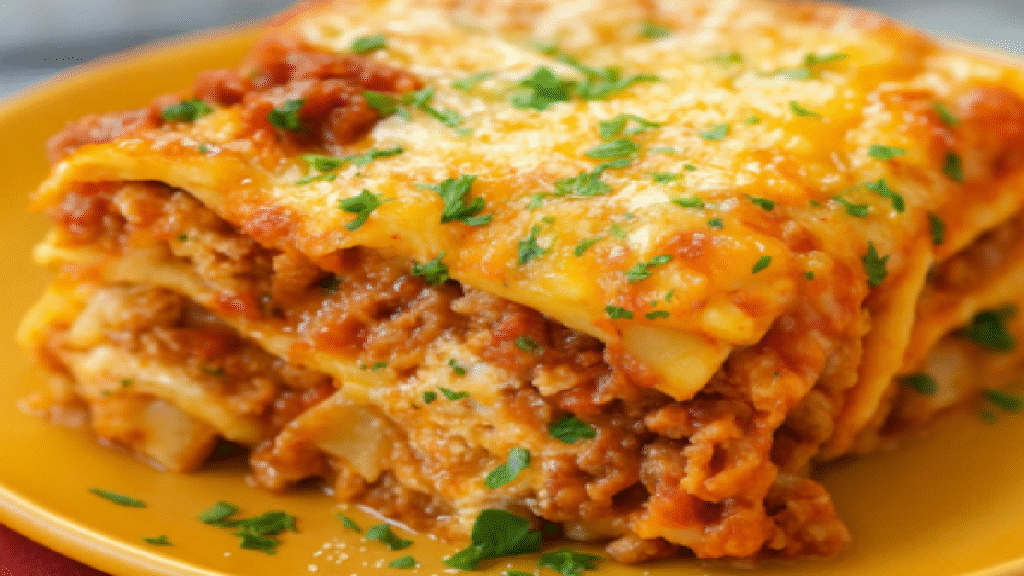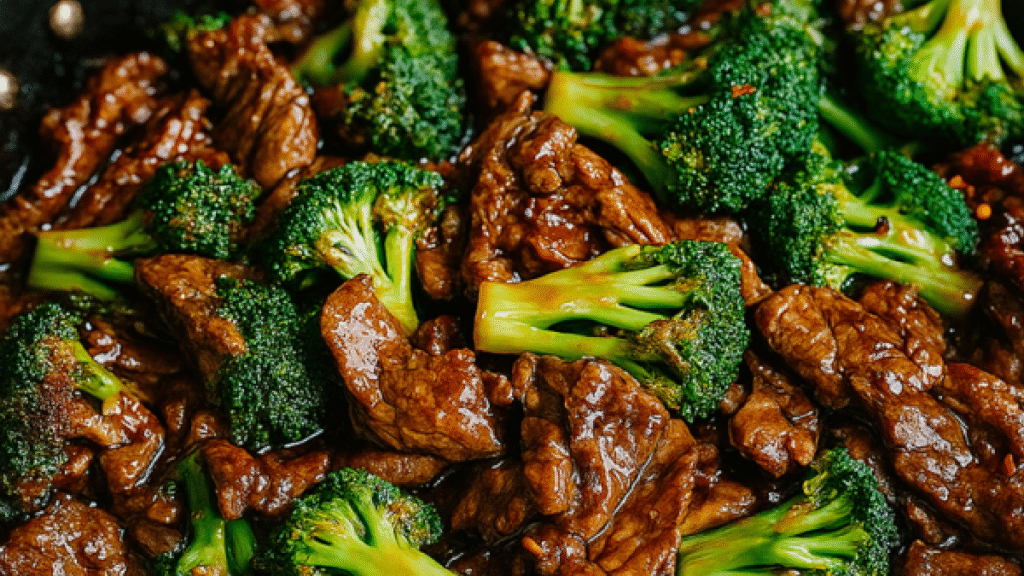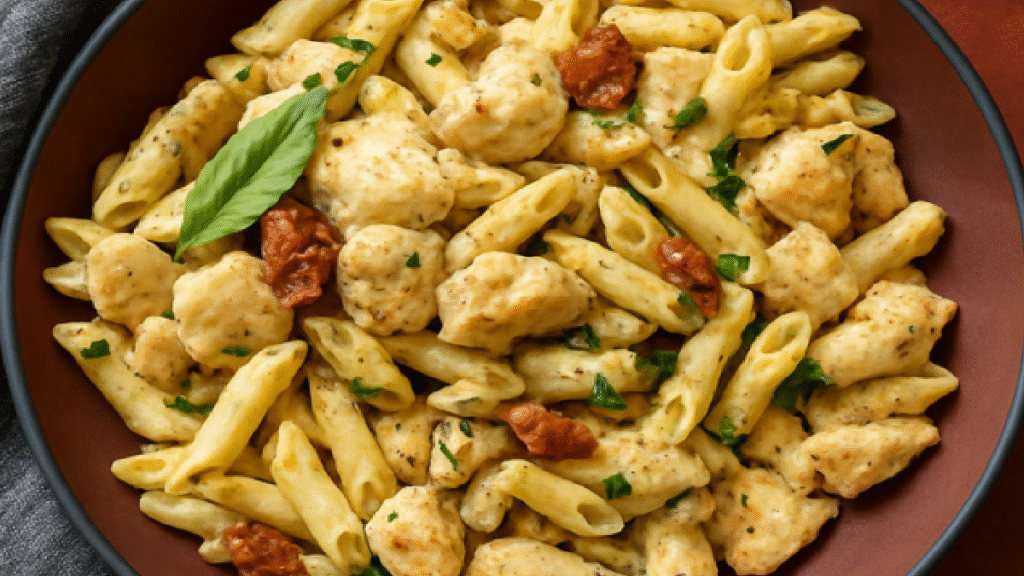Indulge in the rich flavors of Italy with a classic cheesy lasagna that’s surprisingly simple to make. This beloved dish is a staple for a reason, offering layers of tender pasta, rich sauce, and a blend of melted cheeses that will satisfy any appetite.
For those looking to explore variations of this Italian classic, you might find inspiration in other pasta bakes, such as the gratin de pates, which offers a similarly comforting and cheesy experience. Our easy lasagna recipe is designed to be straightforward, using ingredients you’re likely to have on hand.
Key Takeaways
- A simple, layered lasagna dish that’s easy to prepare.
- Rich flavors from a blend of cheeses and pasta.
- Adaptable to various tastes and dietary preferences.
- Perfect for a comforting meal that’s sure to please.
- Can be made in under an hour, ideal for busy evenings.
The Beloved Italian Classic
For centuries, lasagna has been a cornerstone of Italian cooking, cherished globally. This Italian lasagna recipe, with its layers of pasta, rich meat sauce, and a blend of cheeses, has become a staple in many cultures around the world.
The classic lasagna recipe is more than just a dish; it’s a representation of Italian hospitality and the country’s rich culinary history. Lasagna’s enduring popularity stems from its comforting flavors and the versatility it offers in terms of ingredients and variations.
Whether it’s a family gathering or a special occasion, lasagna is often at the center of the table. Its widespread appeal lies in the simplicity of its preparation and the depth of its flavors, making it a beloved dish across different cultures.
The art of making lasagna, while traditional, allows for creativity and personal touches, making each classic lasagna recipe unique. This blend of tradition and innovation is what continues to make lasagna a cherished dish worldwide.
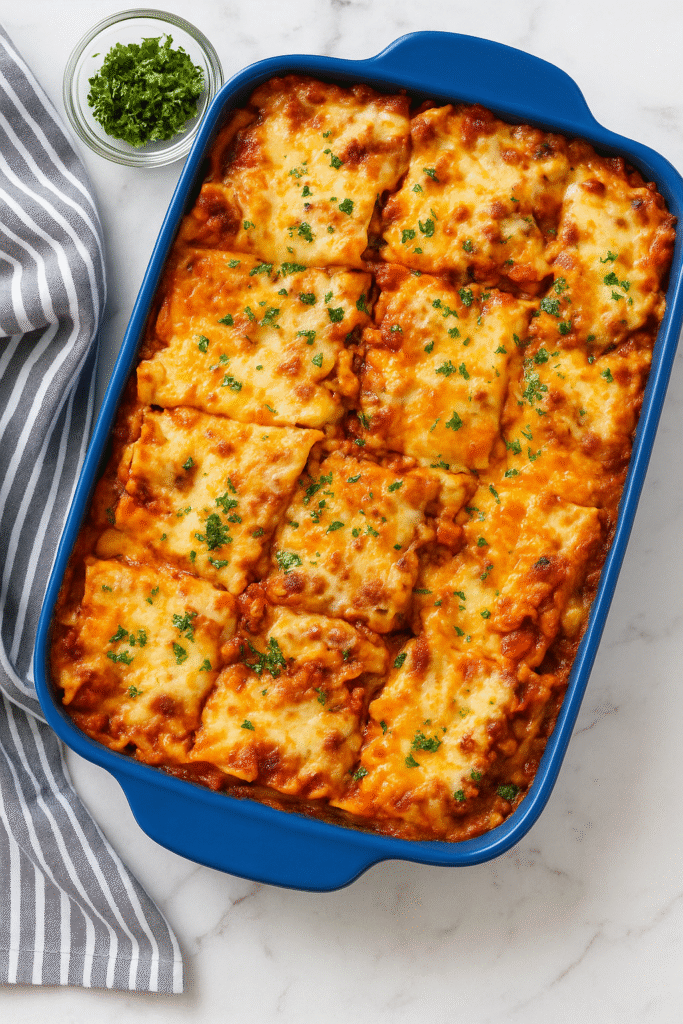
History of Lasagna: From Ancient Rome to Modern Tables
From its humble beginnings in Italy to its global popularity today, lasagna’s history is a fascinating tale. Lasagna, a dish that has captured the hearts of many, has a rich and varied past that spans centuries.
Origins in Italy
Lasagna originated in Italy, with its roots tracing back to ancient times. The name “lasagna” is derived from the Greek word “lasanum,” meaning a flat sheet of dough, or “laganon,” which was a type of flat bread. The dish evolved over time, influenced by various Italian regions and their culinary traditions. For a deeper dive into Italian culinary traditions, exploring recipes like escalope milanaise can provide insight into the rich gastronomic heritage of Italy.
Evolution of the Recipe
As Italian cuisine spread throughout the world, lasagna underwent significant transformations, adapting to local tastes and ingredients. The modern lasagna recipe, characterized by layers of pasta, meat sauce, and cheese, is a result of this evolution. The dish has been influenced by various cultures, leading to a diverse array of lasagna recipes. Today, lasagna remains a beloved dish globally, with its versatility allowing it to be enjoyed in numerous variations.
The evolution of lasagna is a testament to the dynamic nature of culinary traditions and the adaptability of recipes to different cultural contexts.
Essential Ingredients for the Perfect Lasagna Recipe
To create a truly unforgettable lasagna, it’s crucial to start with the right components. The quality and selection of ingredients play a significant role in the final dish’s flavor and texture.
Pasta Sheets
The foundation of lasagna is its pasta sheets. You can use either fresh or dried lasagna noodles. Fresh pasta provides a more delicate texture, while dried pasta is more convenient and still yields great results. For an authentic Italian touch, consider using dehydrated lasagna sheets that you can rehydrate during cooking.
Meat Options
For a meat-based lasagna, you can choose between ground beef, pork, or a combination of the two. Some recipes also include sausage for an extra kick of flavor. For a more refined taste, consider using high-quality ground meat from trusted sources.
Cheese Selection
Cheese is a crucial component, with ricotta, mozzarella, and parmesan being the classic choices. Ricotta provides creaminess, mozzarella adds a melty texture, and parmesan contributes a salty, umami flavor. You can also experiment with other cheeses like gorgonzola or fontina to create a unique flavor profile.
Sauce Components
The sauce is another vital element. A traditional lasagna sauce is made with tomatoes, garlic, onions, and herbs. You can use canned tomatoes for convenience or fresh tomatoes for a more vibrant flavor. Some recipes also include a touch of red wine to deepen the sauce’s flavor.
Herbs and Seasonings
Finally, herbs and seasonings bring everything together. Basil, oregano, and thyme are commonly used herbs that add depth and warmth to the dish. Don’t forget to season with salt and pepper to enhance the overall flavor.
By carefully selecting these essential ingredients, you’ll be well on your way to creating a lasagna that’s sure to impress.
Kitchen Equipment You’ll Need
To make the perfect lasagna, having the right kitchen equipment is crucial. The quality of your lasagna depends not just on the ingredients, but also on the tools you use to prepare it.
Baking Dish Recommendations
A good lasagna starts with the right baking dish. A 9×13 inch baking dish is the standard size for most lasagna recipes, allowing for even layering and cooking. Consider a dish made from high-quality ceramic or glass for even heat distribution. For more information on cooking techniques, you can visit this culinary site.
- Durable and heat-resistant materials
- Non-stick coating for easy serving
- Aesthetically pleasing for presentation
Other Helpful Tools
Besides a baking dish, other tools can make lasagna preparation easier. These include a large mixing bowl for combining ingredients, a sharp knife for chopping, and a wooden spoon for mixing. A lasagna server can be very helpful when it’s time to serve.
Preparing the Meat Sauce
The secret to a mouth-watering lasagna is in the preparation of its meat sauce, a process that requires patience and attention to detail. A well-crafted meat sauce is the backbone of a delicious lasagna, providing depth and richness to the dish.
Sautéing the Base
Start by sautéing a mixture of finely chopped onions, carrots, and celery – known as soffritto – in olive oil until they’re softened and fragrant. This step is crucial as it lays the flavor foundation for your meat sauce. Add minced garlic towards the end to prevent it from burning.
Next, add your choice of ground meat (beef, pork, or a combination of the two) to the pan, breaking it up with a spoon as it cooks. Ensure the meat is browned evenly, as this will enhance the overall flavor of your sauce.
Adding Tomatoes and Seasonings
Once your meat is browned, it’s time to add the tomatoes. Use high-quality canned crushed tomatoes for the best flavor. You can also add a splash of red wine to deepen the flavor profile of your sauce. Season with salt, a pinch of sugar, and your choice of herbs (such as basil, oregano, or thyme).
Stir well to combine all the ingredients, ensuring that the flavors meld together harmoniously. The quality of your tomatoes will significantly impact the final taste, so choose wisely.
Simmering to Perfection
Allow your meat sauce to simmer gently for at least an hour, stirring occasionally, to let the flavors mature and the sauce thicken. The longer it simmers, the richer it will become. If using, add some tomato paste towards the end of the simmering time to further intensify the flavor.
Before assembling your lasagna, taste and adjust the seasoning of your meat sauce as needed. A good meat sauce should be rich, savory, and slightly thickened, coating the pasta sheets without overpowering them.
Creating the Perfect Béchamel Sauce: A French Touch
In the world of lasagna, a well-made béchamel sauce is the secret to a rich, creamy dish. This white sauce, a staple of French cuisine, adds depth and complexity to the traditional Italian recipe.
The Roux Base
The foundation of a great béchamel sauce is its roux base, made from equal parts of butter and flour. To start, melt 2 tablespoons of butter in a saucepan over medium heat. Once melted, add 2 tablespoons of all-purpose flour, whisking continuously to avoid lumps. Cook for about 1 minute, until the mixture is lightly golden and has a nutty aroma.
Tips for a smooth roux:
- Whisk constantly to prevent lumps.
- Cook the roux long enough to remove the raw flour taste.
Adding Milk and Seasonings
Gradually pour in 1 cup of warm milk, whisking vigorously to maintain a smooth consistency. Bring the mixture to a simmer and cook until it thickens, coating the back of a spoon. Season with salt, nutmeg, and a pinch of black pepper to enhance the flavor. For an extra rich béchamel, consider adding a sprinkle of grated Parmesan cheese.
The quality of milk matters: Using whole milk will result in a creamier sauce compared to low-fat or skim milk.
Achieving the Ideal Consistency
The perfect béchamel sauce should be thick enough to coat pasta sheets without being too runny or overly thick. If the sauce becomes too thick, a small amount of additional milk can be added. Conversely, if it’s too thin, simmering it for a few more minutes will help achieve the desired consistency.
Key to success: Constant whisking and patience are crucial for achieving the ideal béchamel sauce.
Preparing the Cheese Mixture for Ultimate Creaminess
To create a truly exceptional lasagna, the cheese mixture must be prepared with care. The right blend of cheeses can elevate the dish, providing a rich, creamy texture that complements the pasta and sauce.
Ricotta Base
The foundation of a great cheese mixture is often ricotta cheese. It’s essential to use high-quality ricotta to avoid a grainy texture. Drain excess moisture from the ricotta to ensure it doesn’t make the lasagna too watery.
Adding Parmesan and Mozzarella
To enhance the flavor and texture, Parmesan and mozzarella cheese are added to the ricotta base. Parmesan brings a salty, umami taste, while mozzarella contributes to the dish’s creaminess when melted.
French Cheese Alternatives
For a French twist, consider incorporating fromage blanc or Comté. Fromage blanc can add a similar texture to ricotta with a slightly different flavor profile, while Comté offers a nutty taste that pairs well with the other ingredients.
By carefully selecting and blending these cheeses, you can achieve a cheese mixture that is both creamy and flavorful, perfect for your lasagna.
Assembling Your Lasagna: Layer by Layer
To achieve lasagna perfection, it’s crucial to understand the layering technique. Assembling lasagna is a process that requires some patience, but the end result is well worth the effort. The layering process involves several key components that work together to create a dish that’s both flavorful and visually appealing.
The First Layer: Sauce
The foundation of a great lasagna starts with a rich, meaty sauce. Begin by spreading a generous amount of your prepared meat sauce at the bottom of your baking dish. This not only adds flavor but also prevents the pasta from sticking to the dish. Ensure the sauce covers the entire surface to create a uniform base for your lasagna.
Pasta Sheet Placement
Next, arrange a layer of pasta sheets on top of the sauce. It’s essential to slightly overlap the pasta sheets to prevent the filling from escaping during baking. The pasta layer should be as even as possible to ensure consistent cooking.
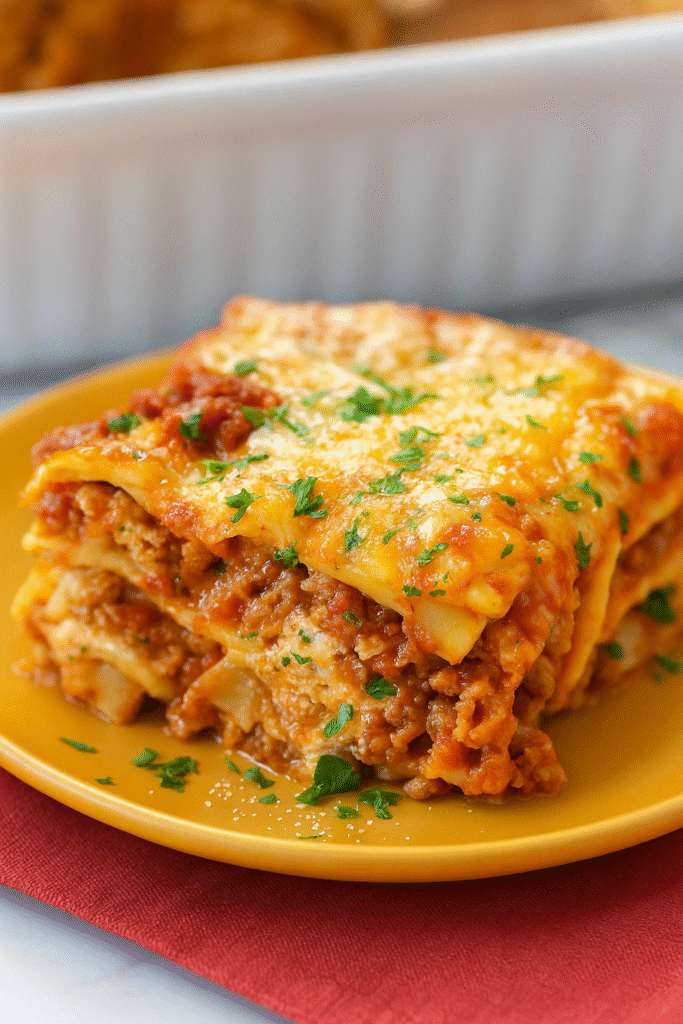
Cheese Layer Techniques
The cheese layer is where you can get creative with your lasagna. Spread a mixture of ricotta, Parmesan, and mozzarella cheese over the pasta sheets. A smooth, even layer is key to a well-structured lasagna. Make sure to cover the pasta completely, but don’t overdo it – you want to maintain a balance between the different layers.
Repeating the Layers
Continue building your lasagna by repeating the layers: sauce, pasta, and cheese. Typically, you’ll want to end with a layer of cheese on top. This not only adds flavor but also creates a beautifully browned crust during baking. The number of layers can vary depending on the depth of your baking dish and personal preference.
By following these steps and paying attention to the layering process, you’ll be able to create a lasagna that’s sure to impress. Whether you’re cooking for a family dinner or a special occasion, your lasagna assembly skills will shine through in the final product.
The Best Lasagna Recipe: Step-by-Step Instructions
To create the ultimate lasagna, follow these straightforward steps that guarantee a deliciously cheesy and satisfying meal. With a preparation timeline, a detailed cooking process, and a visual guide, you’ll be well on your way to lasagna perfection.
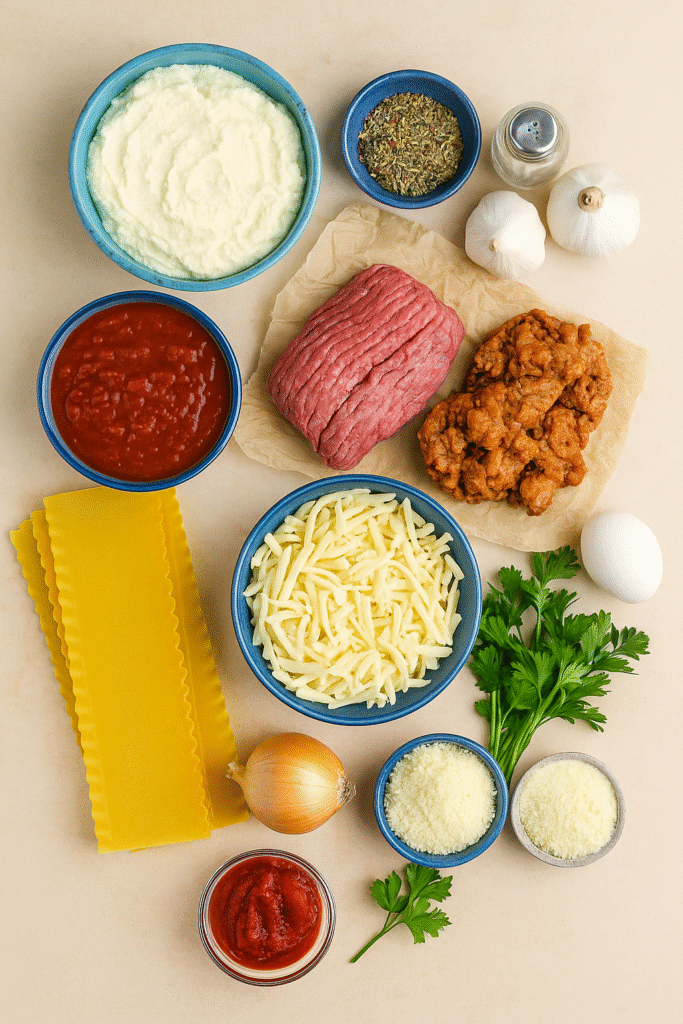
Preparation Timeline
Preparing your lasagna requires some planning. Start by allocating 30 minutes for preparing the meat sauce, béchamel sauce, and cheese mixture. Then, allow 20 minutes for assembling the lasagna. The total preparation time is approximately 1 hour.
- Meat Sauce Preparation: 30 minutes
- Béchamel Sauce Preparation: 20 minutes
- Cheese Mixture Preparation: 10 minutes
- Assembly: 20 minutes
Cooking Process Overview
Cooking your lasagna to perfection involves baking it in a preheated oven. Here’s a brief overview:
- Preheat your oven to 375°F (190°C).
- Cover the lasagna with aluminum foil and bake for 30 minutes.
- Remove the foil and continue baking for an additional 10-15 minutes, or until the top is golden brown.
For more detailed cooking techniques, you might find inspiration in other culinary guides, such asmastering the art of quiche lorraine.
Visual Guide to Perfect Layers
A well-layered lasagna is not only delicious but also visually appealing. Here’s a simple guide:
Start with a layer of meat sauce, followed by pasta sheets, then a cheese mixture, and finally a layer of béchamel sauce. Repeat this process, finishing with a layer of cheese on top.
By following these steps and guidelines, you’ll be able to create a mouth-watering lasagna that’s sure to impress. Happy cooking!
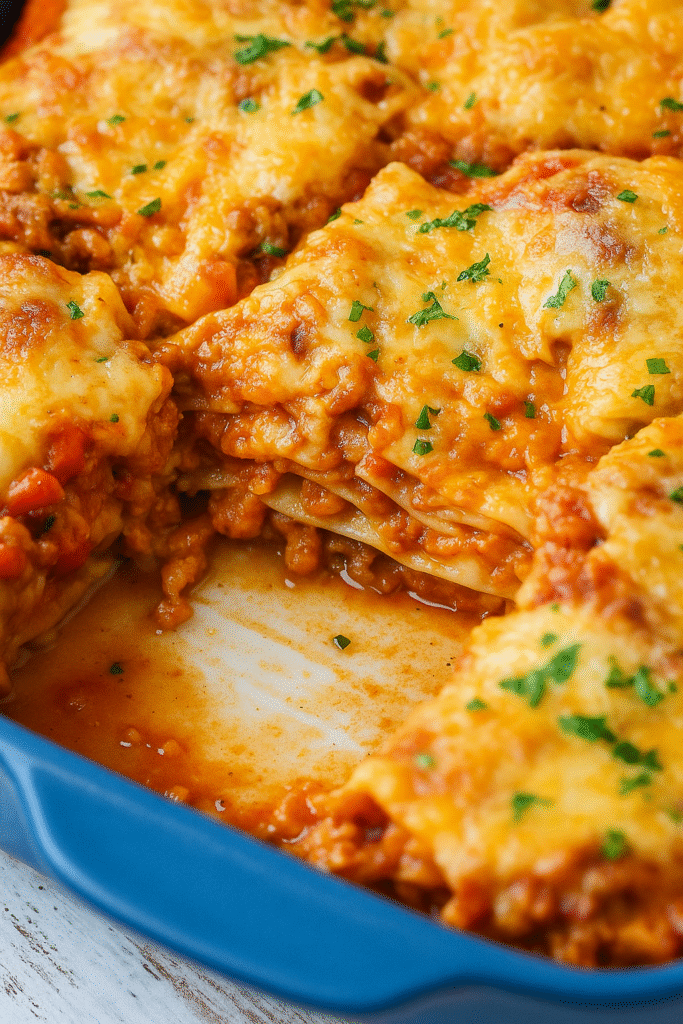
Baking to Cheesy Perfection
To achieve a perfectly baked lasagna, it’s crucial to understand the importance of temperature and timing. Baking lasagna is not just about placing it in the oven; it’s an art that requires precision to achieve that golden-brown crust and a well-cooked, cheesy interior.
Temperature and Timing
The ideal temperature for baking lasagna is between 375°F (190°C) and 400°F (200°C). Preheating the oven to the right temperature is essential for even cooking. The baking time can vary depending on the size and thickness of the lasagna, but generally, it takes about 30 to 45 minutes for a standard-sized lasagna.
Here are some general guidelines for baking lasagna:
- Covered with foil: 30 minutes at 375°F (190°C)
- Uncovered: Additional 10-15 minutes or until the top is golden brown
Visual Cues for Doneness
While timing is crucial, it’s also important to check for visual cues to ensure your lasagna is perfectly cooked. A golden-brown crust on top is a good indicator of doneness. Additionally, check that the lasagna is hot and bubbly around the edges and that the cheese is melted and slightly browned.
Some key visual cues include:
- A golden-brown top layer
- Bubbly edges
- A hot, melted cheese center
By combining the right temperature, timing, and visual checks, you’ll achieve a lasagna that’s baked to cheesy perfection.
Resting: The Secret to Perfect Slices
Resting your lasagna is not just a suggestion, it’s a necessity for perfect slices. After the lasagna has been baked to perfection, it’s tempting to dive in immediately. However, the sources emphasize the importance of letting lasagna rest before serving, ensuring that the layers set properly and the flavors meld together.
When you let your lasagna rest, you’re allowing the juices to redistribute and the cheese to set. This makes a significant difference in the presentation and the overall dining experience. A well-rested lasagna will have cleaner, more defined layers, making it more appealing to the eye and easier to serve.
To achieve the best results, it’s recommended to let your lasagna rest for at least 15 to 30 minutes before slicing. This patience will be rewarded with perfect slices that hold their shape and showcase the layers beautifully.
By incorporating this simple step into your lasagna-making process, you’ll elevate your dish from good to great, ensuring that your resting lasagna is the talk of the dinner table.
Delicious Variations of the Classic Recipe
Exploring variations of lasagna can lead to delightful discoveries in the kitchen. The classic recipe serves as a foundation for numerous creative interpretations, catering to diverse tastes and dietary preferences.
Vegetarian Options
For vegetarians, lasagna can be just as satisfying with the right combination of ingredients. Consider layering sautéed spinach, mushrooms, and ricotta cheese for a hearty vegetarian lasagna. Roasted vegetables like eggplant and zucchini can add depth and texture. Using a variety of cheeses, such as mozzarella, parmesan, and goat cheese, enhances the flavor profile.
Seafood Lasagna
Seafood lasagna offers a refreshing twist on the traditional recipe. Incorporating shrimp, scallops, or crab meat into the layers can create a rich and savory dish. Pairing seafood with a creamy bechamel sauce and a sprinkle of parmesan cheese results in a decadent culinary experience.
French-Inspired Twists
Introducing French elements into lasagna can elevate the dish to new heights. Using ingredients like duck confit or foie gras can add a luxurious touch. Alternatively, incorporating French cheese like gruyère or comté into the ricotta mixture can enhance the flavor. These twists blend the comfort of lasagna with the sophistication of French cuisine.
Serving Suggestions and Accompaniments
The presentation of lasagna can elevate the dining experience significantly. When serving this Italian classic, consider complementing it with appropriate side dishes and beverages to create a well-rounded meal.
Side Dishes
Choosing the right side dishes can enhance your lasagna dinner. A simple green salad with a light vinaigrette dressing is a classic choice, as is garlic bread, which pairs perfectly with the rich flavors of lasagna. For a more contemporary twist, consider roasted vegetables or a Caprese salad featuring fresh mozzarella, tomatoes, and basil.
For a more substantial accompaniment, you might consider a French dessert to follow your meal, providing a delightful contrast to the savory lasagna.
Wine Pairings for French Dining
When it comes to wine pairings, lasagna’s rich flavors can stand up to a variety of wines. For a red wine option, a Chianti or a Dolcetto works well, as their moderate acidity cuts through the richness of the cheese and pasta. If you prefer white wine, a dry Riesling or a Pinot Grigio can provide a nice contrast.
For those dining in a French-inspired setting, consider a Bordeaux or a Côtes du Rhône, which can complement the complex flavors of lasagna while adding a touch of elegance to the meal.
Presentation Tips
Presentation is key to making your lasagna appealing. Use a large serving spatula to portion out neat slices, and consider garnishing with fresh herbs like basil or parsley to add color. Serving lasagna in a decorative baking dish or transferring it to a stylish serving platter can also enhance its visual appeal.
By paying attention to these details, you can turn a simple lasagna dinner into a memorable dining experience.
Nutritional Information and Health Considerations
Understanding the nutritional content of lasagna is crucial for maintaining a balanced diet. Lasagna, a classic Italian dish, can be both nutritious and indulgent, depending on its ingredients and preparation methods.
Calorie Breakdown
A traditional lasagna recipe can be quite calorie-dense, with a single serving potentially ranging from 350 to 500 calories or more, depending on the ingredients used. The cheese and meat sauce are typically the largest contributors to the calorie count. For instance, a layer of rich meat ragù or a generous helping of ricotta and mozzarella cheese can significantly increase the dish’s overall caloric content.
Lighter Alternatives
For those looking to enjoy lasagna without the high calorie count, there are several healthier alternatives to consider. Using whole wheat pasta sheets instead of traditional white pasta can increase the fiber content of the dish. Additionally, opting for leaner protein sources, such as turkey or vegetarian options, and reducing the amount of cheese used can make lasagna a more diet-friendly option. For more ideas on healthy ingredients, you can explore resources like Buzzito’s guide on Greek yogurt, which discusses nutritious ingredients that can be adapted into lasagna recipes.
Dietary Adaptations
Lasagna can be adapted to suit various dietary needs. For vegetarians and vegans, substituting the meat sauce with layers of roasted vegetables or using dairy-free cheese alternatives can make the dish more inclusive. Gluten-free pasta sheets are also available for those with gluten intolerance. As
“The key to a healthy lasagna is balance and moderation in its ingredients.”
, a principle that guides healthier cooking without sacrificing flavor.
Storing and Reheating Leftover Lasagna
After enjoying your delicious homemade lasagna, you might be left wondering how to store and reheat the leftovers effectively. Fortunately, with the right techniques, you can enjoy your lasagna for days to come, maintaining its flavor and texture.
Refrigeration Guidelines
To store leftover lasagna in the refrigerator, it’s essential to cool it down to room temperature first to prevent bacterial growth. Once cooled, cover it tightly with plastic wrap or aluminum foil and refrigerate within two hours of cooking. When reheating, you can use the oven or microwave. For oven reheating, preheat to 350°F (175°C), cover the lasagna with foil, and heat for about 30 minutes, or until hot and bubbly. For a quicker option, microwave individual portions on medium heat, checking and stirring every 30 seconds until heated through.
Freezing and Thawing Methods
For longer storage, consider freezing your leftover lasagna. Wrap it tightly in plastic wrap or aluminum foil and place it in a freezer-safe bag. Label and date the bag, then store it in the freezer for up to three months. When you’re ready to eat it, thaw overnight in the refrigerator or thaw quickly by submerging the wrapped lasagna in cold water. Reheat as described above. It’s also worth noting that some foods don’t freeze well, as discussed in this article about foods that shouldn’t be frozen for too, but lasagna is generally a safe bet.
Conclusion: Enjoying Your Homemade Lasagna Masterpiece
Now that you’ve mastered the art of creating a delicious homemade lasagna, it’s time to savor the fruits of your labor. Gather your loved ones and enjoy the rich flavors and textures of this beloved Italian dish, elevated by a touch of French flair.
Your homemade lasagna recipe is sure to become a staple in your culinary repertoire, perfect for special occasions or cozy nights in. The layers of tender pasta, savory meat sauce, and creamy cheese mixture will delight your taste buds and leave you wanting more.
As you take your first bite, appreciate the joy of sharing a homemade meal with others. Lasagna is a dish that brings people together, and your efforts will be rewarded with smiles and satisfied appetites. So go ahead, indulge in your lasagna masterpiece, and relish the pleasure of a meal made with love.
FAQ
What is the origin of lasagna?
Lasagna originated in Italy, with its history dating back to ancient Rome. The dish evolved over time, influenced by various regions and cultures.
What are the essential ingredients for making lasagna?
The essential ingredients for making lasagna include pasta sheets, meat or vegetarian options, cheese selection (such as ricotta, Parmesan, and mozzarella), sauce components, and herbs and seasonings.
Can I make lasagna without meat?
Yes, you can make a delicious vegetarian lasagna by substituting meat with sautéed vegetables, mushrooms, or eggplant.
What is béchamel sauce, and how is it used in lasagna?
Béchamel sauce is a French white sauce made with a roux base, milk, and seasonings. It’s used in lasagna to add creaminess and richness to the dish.
How do I store leftover lasagna?
To store leftover lasagna, refrigerate it within two hours of cooking, and consume within three to five days. You can also freeze it for up to three months and thaw it when needed.
Can I make lasagna ahead of time?
Yes, you can assemble lasagna ahead of time and refrigerate or freeze it until you’re ready to bake it.
What are some variations of the classic lasagna recipe?
Some variations of the classic lasagna recipe include vegetarian options, seafood lasagna, and French-inspired twists, such as using different types of cheese or adding other ingredients like spinach or mushrooms.
How do I achieve the perfect cheese layer in lasagna?
To achieve the perfect cheese layer, combine ricotta, Parmesan, and mozzarella cheese, and spread it evenly over the pasta sheets. You can also add other ingredients like egg or herbs to enhance the flavor.
What are some tips for baking lasagna to perfection?
To bake lasagna to perfection, ensure the oven is preheated to the right temperature, and bake it for the recommended time. You can also check for visual cues like golden-brown cheese and a hot, bubbly sauce.
Can I use different types of pasta for lasagna?
While traditional lasagna noodles are the most common choice, you can experiment with other types of pasta, such as whole wheat or gluten-free options, to suit your dietary needs.
How do I reheat leftover lasagna?
To reheat leftover lasagna, cover it with aluminum foil and bake it in a preheated oven until hot and steaming. You can also reheat individual portions in the microwave.
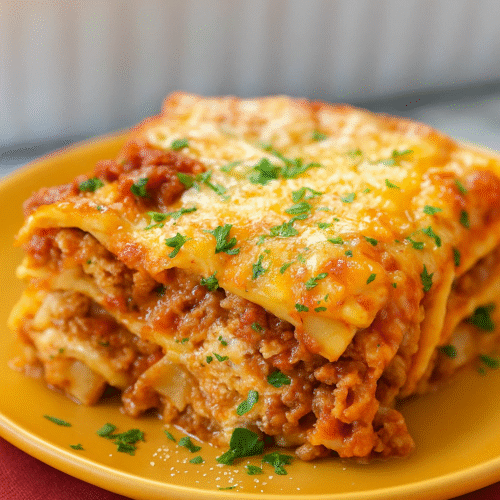
Easy Homemade Lasagna
Ingredients
- 12 lasagna noodles uncooked
- 4 cups shredded mozzarella cheese divided
- ½ cup shredded Parmesan cheese divided
- ¾ teaspoon salt more to taste
- ½ pound lean ground beef
- ½ pound Italian sausage
- 1 yellow onion diced
- 2 cloves garlic minced
- 36 ounces pasta sauce
- 2 tablespoons tomato paste
- 1 teaspoon Italian seasoning
- 2 cups ricotta cheese or cottage cheese
- ¼ cup chopped fresh parsley
- 1 large egg beaten
Instructions
- Preheat oven to 350°F (175°C). Boil noodles until al dente, drain, rinse with cold water, and set aside.
- In a large skillet, brown beef, sausage, onion, and garlic over medium-high heat. Drain fat.
- Stir in pasta sauce, tomato paste, Italian seasoning, salt, and pepper. Simmer uncovered for 5 minutes.
- In a bowl, mix together 1 ½ cups mozzarella, ¼ cup Parmesan, ricotta, parsley, beaten egg, and a pinch of salt.
- Spread 1 cup meat sauce in a 9×13 pan. Layer 3 noodles, ⅓ of the cheese mixture, 1 cup of meat sauce. Repeat twice. Finish with 3 noodles topped with remaining sauce.
- Cover with foil and bake for 45 minutes.
- Remove foil, top with remaining mozzarella and Parmesan. Bake uncovered for another 15 minutes until browned and bubbly.
- Let rest for at least 15 minutes before slicing and serving.
Notes
- Use good-quality pasta sauce (Rao’s is recommended).
- Letting the lasagna rest after baking ensures clean slices.
- You can freeze before or after baking.
- Add spinach in the cheese layer (thaw and squeeze 10oz frozen spinach).
- Use only ground beef or substitute with ground turkey if desired.
- Add fennel seeds and extra Italian seasoning if skipping the sausage.

